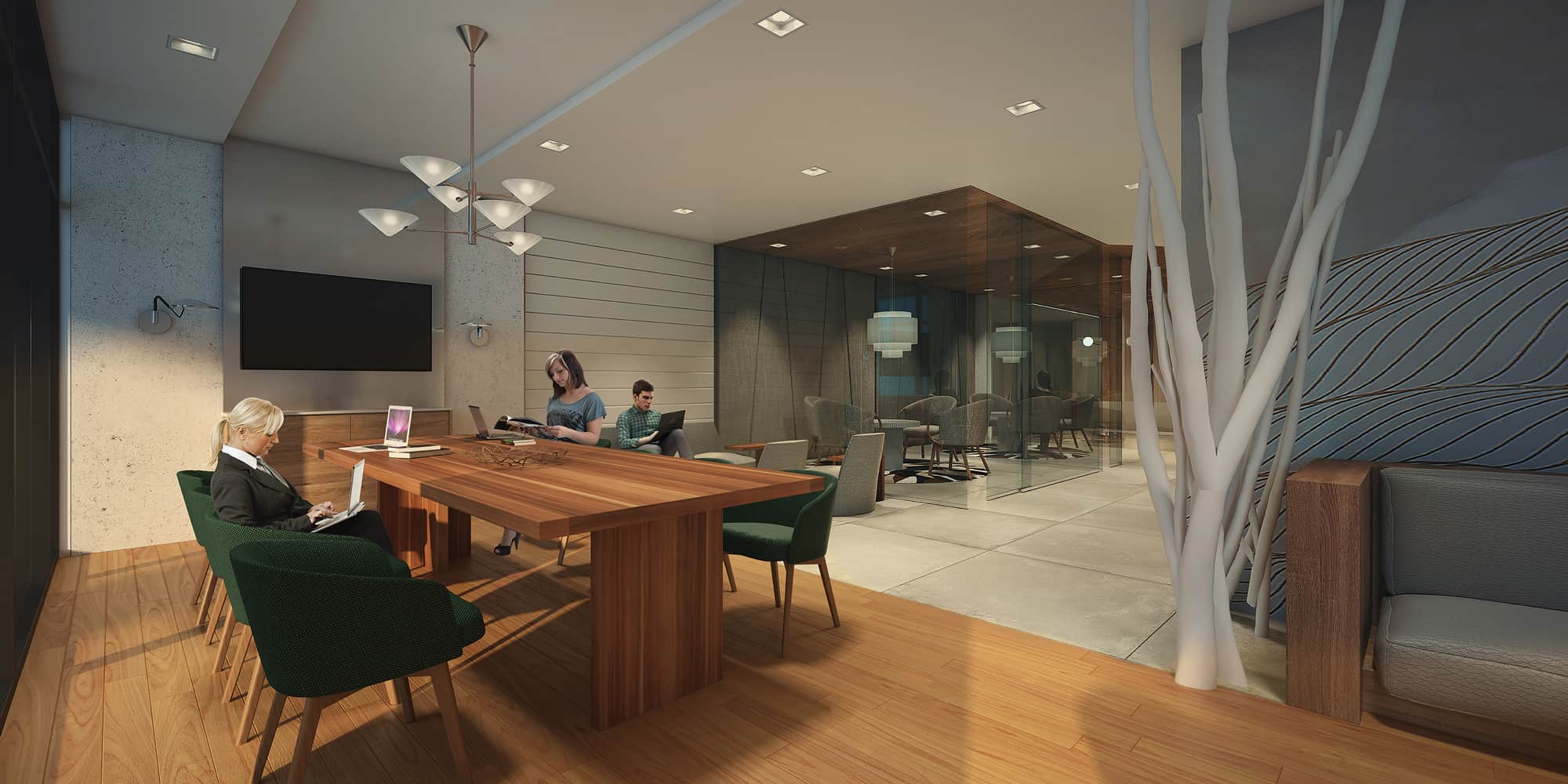Working remotely certainly has its advantages, but slogging it out at home or the closest Starbucks isn’t generally conducive to feeling connected. With spaces like Make Lemonade, WeWork and The Workaround popping up all over the city, co-working is having a moment.
Developers are taking notice, and integrating these spaces into their new residential buildings. It’s an idea that excites Kelly Cray, Principal of interior architecture and design studio U31, and one of the top design consultants in the industry.
We chatted with Kelly about the phenomenon this week.
SDTC: Can you describe some projects you’re working on that have incorporated coworking spaces into the design?
KC: An exciting new project our firm is working on in Toronto’s emerging Downtown East is River & Fifth. Located in Corktown just east of downtown and the financial core, the 37-storey condo offers a co-working amenity space that really caters towards Toronto’s growing tech workforce and start-up culture. Equipped with phone booths for private calls, multiple meeting spots, break-away seating, communal tables and lounge areas. The space also features an elevated level of finishes, giving residents an appropriate space to meet with clients, and is located right off the building’s lobby for easy access.
Maverick Condos located in King Street West’s ‘Restaurant Row’ is another. The 49-storey high-rise will include co-working that integrates with social spaces, encouraging socializing and networking all in one environment. This helps address the fact that often when people work from home, it can feel isolating. Similarly, our plans for the recently launched Galleria on the Park 01 (at Dufferin and Dupont Streets) includes a co-working space that will encompass 40 per cent of an entire amenity floor.
We are seeing an uptick in this trend uptown as well. For example, at M2M Condos at Yonge and Finch, the co-working amenity space includes large format printers and a fully equipped boardroom to host meetings. The intention was to offer a professional zone that makes it easy for parents to work from home.
How have you seen this trend bleed into the housing sector?
We are increasingly seeing how the growing tech boom and entrepreneurial spirit of Toronto has as an influencing factor in condo amenity design, not only in the downtown core, but throughout the GTA. Developers are starting to inject that kind of culture within their buildings.
Co-working spaces in condos give budding entrepreneurs a work-from-home option, which is especially helpful if they don’t have the budget to rent office space. They are also handy for residents whose job allows them to work from home, especially since these spaces are being designed as community spaces that can accommodate people with different working styles.
What is essential to have in a functional coworking space?
It’s important to think about multi-use spaces and multi-use furniture in coworking spaces. Entrepreneurs need to be able to both host a meeting or take a call in a private room, but also network with their peers in a communal space.
What features would you like to see included in the co-working spaces of the future?
The role and design of condominium lobbies are evolving as well as a result of this cultural trend, as they are now also the main point of entry to the co-working space. They are becoming less formal and designed to feel more like public social spaces that connect to their surroundings, much like a hotel. We are starting to design lobbies with future programming in mind, such as a barista or juice bar.
Why are we seeing an explosion of co-working spaces in the city right now?
Research has shown that globally, Toronto ranks third in the rate of new shared office openings. A co-working space opens every 13 days in Toronto, compared to every five days in London and every 7.5 days in New York. This surge corresponds with the growing number of tech entrepreneurs, consultants and freelancers in the city.



 Follow Us On Instagram
Follow Us On Instagram
